Product customization has been very popular over the recent years. We’ve seen more and more personalized or customized clothes, beverage bottles, cosmetics, etc.
We’ve also noticed the trend of Company T-shirts across industries. 2 years ago, we also made our own business t-shirts, but we find not many colleagues want to wear them, because they do not like wearing t-shirts of the same color and design with other people; nor do those t-shirts look fashionable.
After seeing this, we want to do something different this year. Why not purchase some nice hoodies, then use different Jingsourcing design logos? This way, our colleagues can choose the style they like, the color they like, and make their t-shirts different from others.
This is exactly how our story of customizing our own t-shirts starts. We’d much like to share with you our experience of how we made it possible from concept to reality. Keep reading and feel free to reach out to us for more discussion.
Purchase T-shirts from wholesale markets
Once we decide to do it, the first question that comes to mind is where to purchase the t-shirts. There are many ways to find t-shirt suppliers in China, such as wholesale markets, online platforms, trade fairs, and so on. We are in Yiwu, the nearest market is Yiwu clothing wholesale market, one of the largest clothing markets in China. We can also go to Hangzhou, which is not so far away, within an hour’s reach by car.
After consideration, finally, we decided to go to Hangzhou Zhidi International market, the best men’s clothing market in Eastern China.

We walked around in the market, looking for the t-shirt styles that we want and bargaining with the suppliers or the best price.
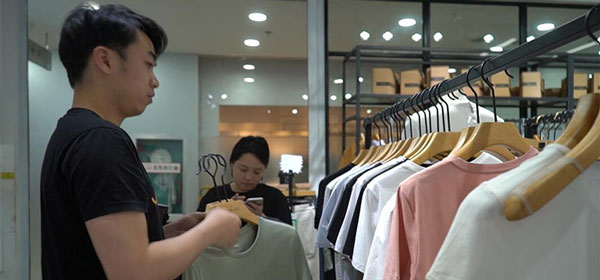
We have 50+ employees in our office, though our purchasing quantity is not large, the good thing is that it is big enough to get a wholesale price!
We were able to buy each t-shirt for only 25-50 RMB ($3.8-$7.6)! For those t-shirts, if you just buy 1 piece, the suppliers will quote you a retail price, usually around 100 RMB for one t-shirt.
After around 3 hours in the market, we finally got all the Tshirt samples from 3 suppliers with different colors and sizes! Happy results to bring back to the office.
Design and Choose Logos
After coming back to the office, we started to design different logos with our in-house graphic designer. We browsed hundreds of t-shirt designs on the internet and finally chose to use silkscreen, embroidery letters and embroidered patch.
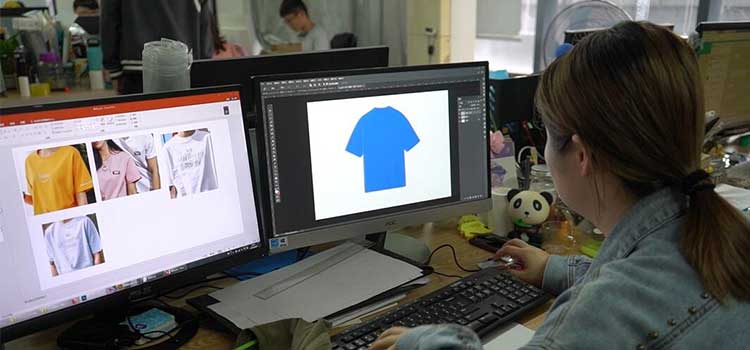
Our graphic designer (Min) working on the logo design
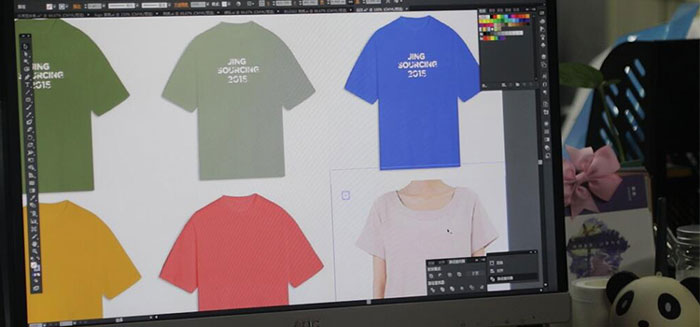
We also built a page on our website to let our colleagues choose the design and color they like.
After that, we were able to calculate the number of different t-shirts for each design. Based on that, we started to find manufacturers to get them all printed.
Find Right Manufacturers for Each Printing Method
The hardest part of the entire process was finding the right manufacturers for each T-shirt printing design. We wanted to find manufacturers that specialized in each printing method, and were also willing to accommodate small quantities at a good price.
As most manufacturers have MOQ requirements, and our quantity is much smaller than that. With the introduction of my friend, there are several manufacturers were willing to do us a favor.
After getting connected with these manufacturers, we made an appointment with each of them and visited all of the 3 manufacturers on the same day to finish all the logos.
Factory 1: Clothing Workshop
Firstly we went to a clothing workshop to help us sew on embroidery patch logo.
Although this type of workshop is very small, they can make almost all types of clothes, no matter it is a t-shirt, hoodie, or down jacket. Of course, their prices will be much lower than those big-scale clothing manufacturers.
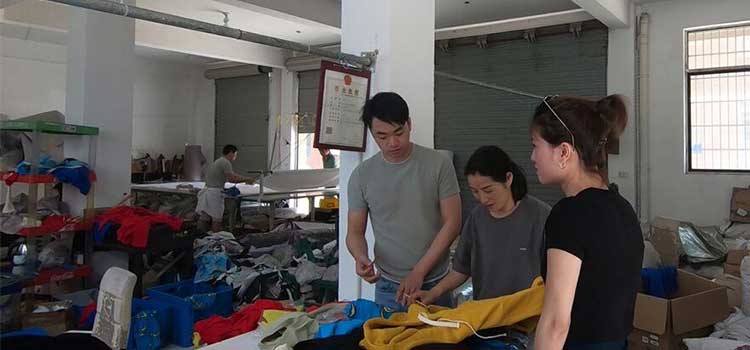
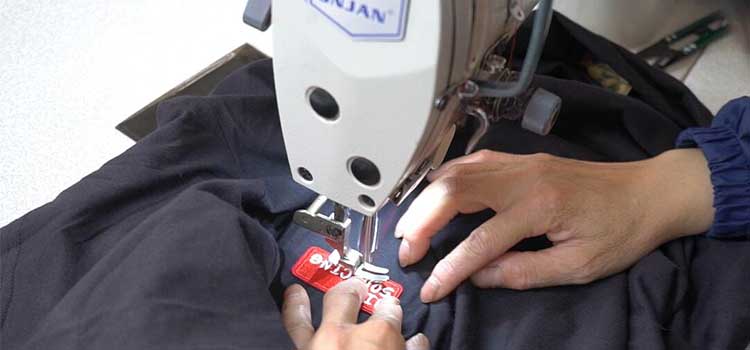
Worker’s sewing embroidered patch on the t-shirt
An embroidered patch is a cloth badge, which can be made by hand or using embroidery machines. There are various ways of attaching an embroidery patch to the fabric surface, such as sew-on, iron-on, etc. You can see them widely used on hats, clothes, appearing very high-quality.
And the cost? We only spent around $20 for making 25 pieces of patches. The supplier only charged us $15 for sewing all these patches on 25 pieces of t-shirts. In total, we only spent $1.4 for using this embroidery patch solution. If we have over 100 pieces of t-shirts to let them process, the total cost for each one will be even less than $0.8.
Factory 2: Embroidery manufacturer
After that we went to an embroidery manufacturer, they will help us make the embroidery logo on the t-shirts.
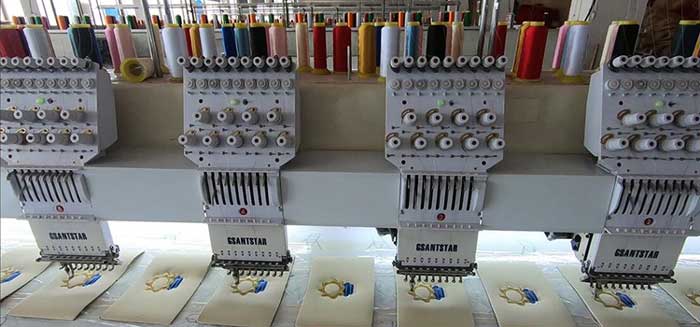
A glimpse of Embroidery Factory
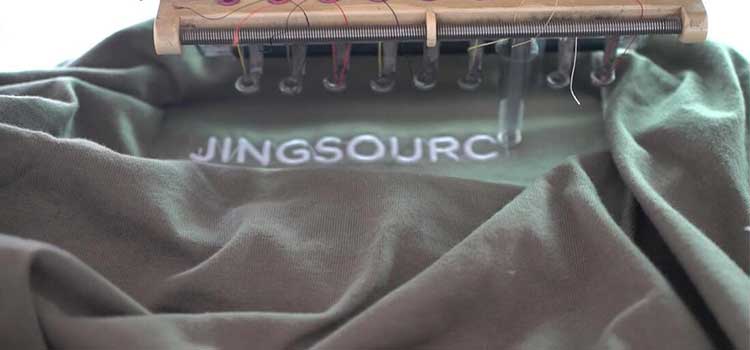
There is one thing that I’d like to mention here. In the beginning, when we presented our printing requirements to the manager of the factory, he told us it is very hard to print embroidery logo on these finished clothes. Because the clothes cannot be put flat and fixed on the machines. But we finally made it by adjusting the logo a little bit smaller.
Usually they embroider this type of logo on the cloth, instead of finished clothes. This is the easiest way for them. That’s also why what we see on the machines is all cloth (just like below).

The embroidery machines are printing on the cloth.
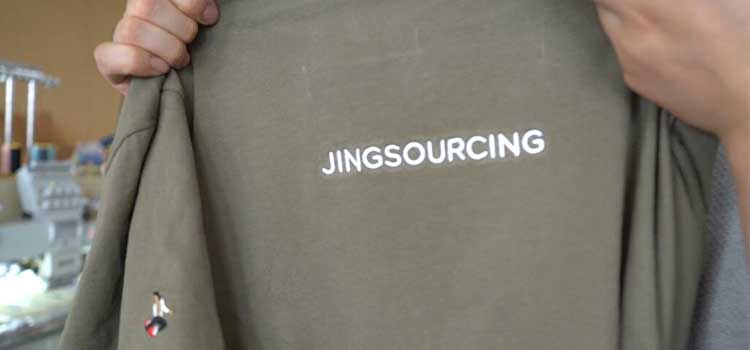
Embroidered logo is finished!
This design is the most popular one among my colleagues, as the embroidered logo makes this whole Tshirt look like a brand one that you buy from the shopping mall.
As we only have 40 clothes to process, the supplier charged us $1 for each t-shirt. We were told that if we have 200 t-shirts to process, they will charge less than $0.5 each.
Factory 3: Silk Screen Printing Manufacturer
After settling down all the things with embroidery manufacturer, we went on to a silk screen printing manufacturer to finish the rest of the clothes.
Silk screen printing is the most popular printing technique used by companies to print designs onto products of different sizes and materials. It is also the cheapest printing method. A mesh is used in this technique to transfer ink onto a substrate.
Below is the manager of the silk screen printing manufacturer, making a printing mold before printing our designs onto the t-shirts. Usually a printing mold costs around $20.

The manager is matching the color using a scraperpi
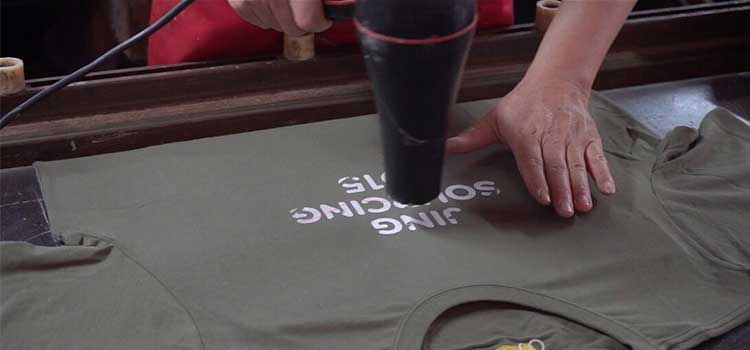
Using a hair dryer to dry the pigment
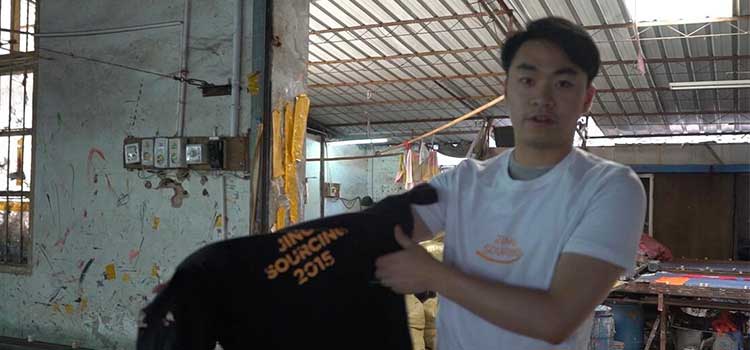
Finally, we finished printing all samples of 3 designs on t-shirts of different colors. They all look pretty good. For the week followed, all the t-shirts will arrive at our office.
We are so happy to see them all finished. The manufacturer charged me $20 for creating the printing mold for each design, and $0.8 for printing each t-shirt.
As you can see from the whole process, we just spent an average price of $7 to buy from the clothing wholesale market, plus $1 for the logo printing, that is $8 in total to customize one t-shirt in China.
Guess about the price for t-shirts of the same quality in the shopping mall. It’ll cost $30 or more in China’s retail stores.
We hope you enjoy this sharing. If you want to make a nice t-shirt or hoodie of good quality for your company or your private label business, customization is the right way to go for the lowest cost.
If you need sourcing help from us, feel free to reach out to us. We are happy to help.

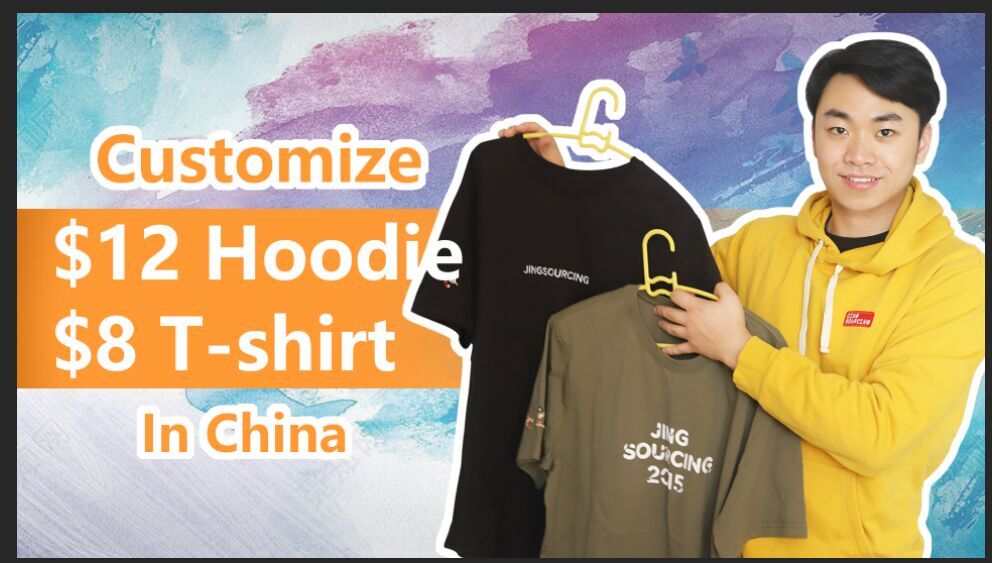

Nice